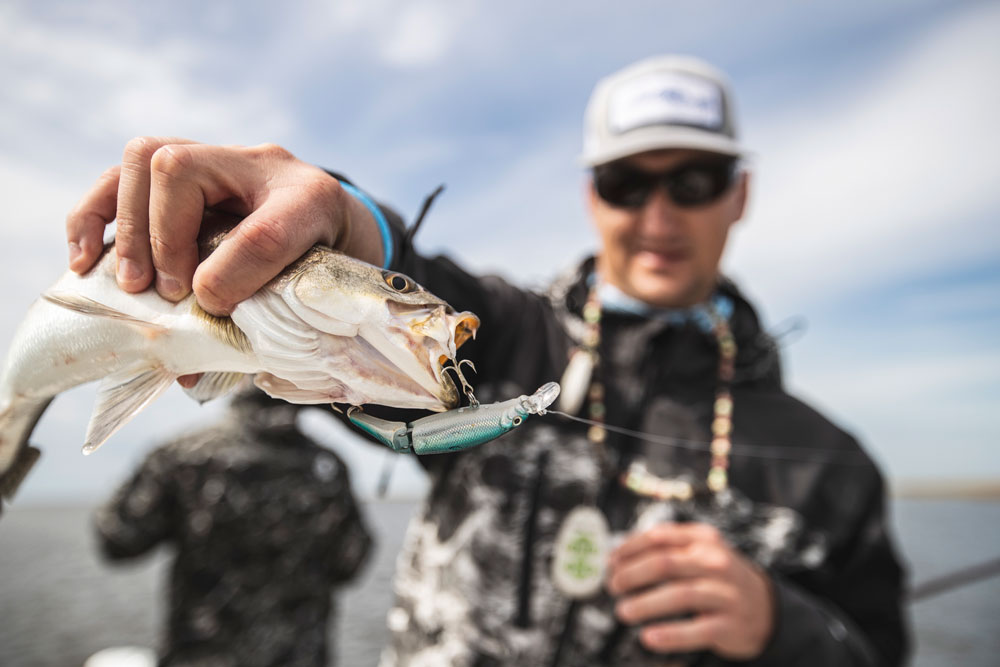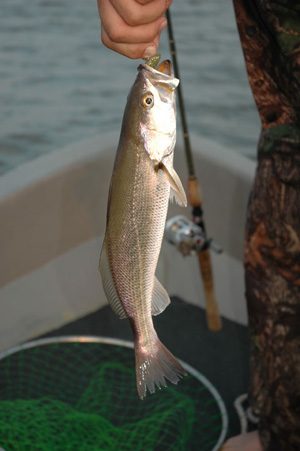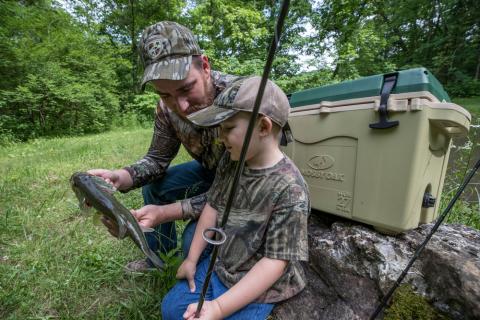
October and June are two of the best fishing months on the Upper Gulf of Mexico Coast. That’s when a big influx of a wide variety of good-eating saltwater fish occurs. Fishermen on the Mississippi Coast call October a reverse June. During June, the Mississippi Gulf Coast experiences warming weather trends that bring the fish in toward shore. In October, the bait fish move in to shore, and the sportsfish follow the bait in to gorge on bait for the spawn and also due to the cooling fronts. The fish realize that winter’s approaching, and that the spawn isn’t far behind winter.
 We generally catch the largest number of speckled trout this month, but these are usually the schooling trout, 12-14 inches long or somewhat bigger. October is the month when our boats at Shore Thing Charters move into Louisiana waters and fish for speckled trout. Anglers can keep 25 trout per day per person with a 12-inch minimum length in Louisiana. There’s also no limit on the number of white trout you can catch and keep there.
We generally catch the largest number of speckled trout this month, but these are usually the schooling trout, 12-14 inches long or somewhat bigger. October is the month when our boats at Shore Thing Charters move into Louisiana waters and fish for speckled trout. Anglers can keep 25 trout per day per person with a 12-inch minimum length in Louisiana. There’s also no limit on the number of white trout you can catch and keep there.
The white trout are often mixed in with the schools of specks. When white trout school up, you even might catch them on a hook with no bait. Generally the white trout are smaller than the specks, averaging 10-12 inches with an occasional 14-inch one. The white trout often are called sweet trout because they are very delicious to eat. Although the white trout aren’t as sexy as catching a speckled trout, they fry up great for the table.
If we have a good day of speckled and white trout fishing, we may have to come home early to Mississippi because all our ice chests are full of fish. We’ve had multi-boat trips before where 10 anglers have brought in 400 pounds of trout. At this time of the year, we can catch trout on live shrimp, lead-headed jigs with soft plastics behind them, and sometimes live Cocohoe minnows.
Another fish that we often catch in October is flounder. They usually show up after the second or third cold front hits our area. We must have a drastic cold front for those fish to show up. I’ve been told that those cold fronts signal to the flounder that they need to move offshore to spawn.





























